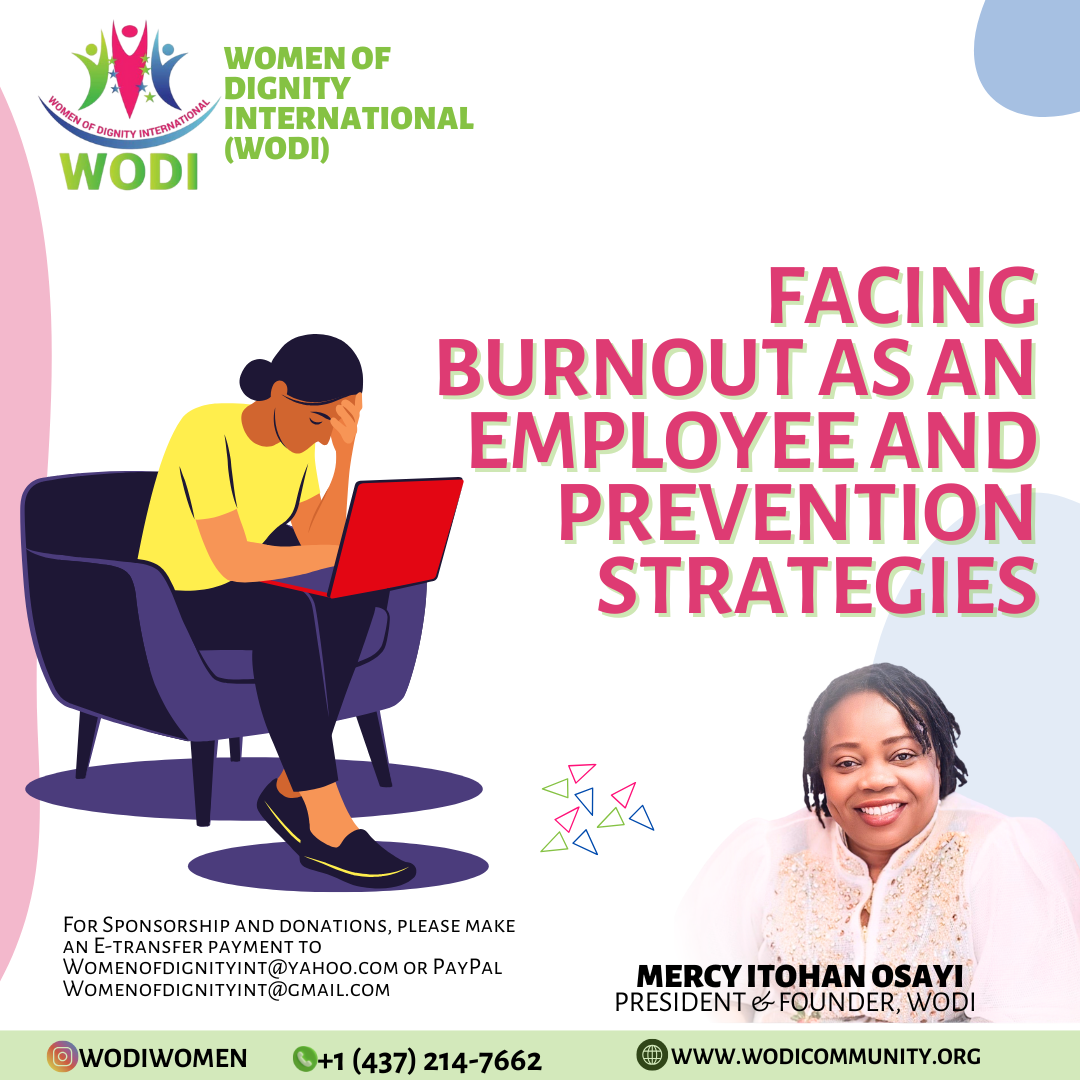Facing Burnout as an Employee and Prevention Strategies

Facing Burnout as an Employee and Prevention Strategies
Burnout is a state of emotional, physical, and mental exhaustion caused by prolonged and excessive stress. It can affect anyone, but it’s particularly common among employees in high-pressure environments. Here are some signs of burnout and prevention strategies to help mitigate its effects.
Signs of Burnout
1. Emotional Exhaustion: Feeling drained, overwhelmed, and unable to cope.
2. Reduced Performance: Decreased productivity and lack of motivation.
3. Cynicism: Developing a negative outlook towards work or colleagues.
4. Physical Symptoms: Headaches, sleep disturbances, and gastrointestinal issues.
5. Detachment: Feeling disconnected from work or colleagues.
6. Increased Irritability: Heightened frustration and mood swings.
Prevention Strategies
1. Set Boundaries
• Define clear work hours and stick to them.
• Avoid checking emails or taking calls outside of work hours.
2. Prioritize Self-Care
• Engage in regular physical activity, eat a balanced diet, and ensure adequate sleep.
• Incorporate relaxation techniques such as meditation, yoga, or deep-breathing exercises.
3. Manage Workload
• Break tasks into smaller, manageable parts.
• Learn to say no when your plate is full or delegate tasks when possible.
4. Cultivate a Supportive Work Environment
• Foster open communication with colleagues and supervisors.
• Seek feedback and support when needed.
5. Take Breaks
• Schedule regular short breaks throughout the day to recharge.
• Use vacation time to disconnect from work completely.
6. Engage in Professional Development
• Pursue learning opportunities that align with your interests and career goals.
• Attend workshops or training sessions to enhance skills and motivation.
7. Establish a Routine
• Create a daily routine that includes time for work, breaks, and personal activities.
• Consistency can provide structure and reduce feelings of chaos.
8. Seek Professional Help
• If feelings of burnout persist, consider speaking with a mental health professional.
• Employee Assistance Programs (EAPs) may offer counseling services.
9. Foster Connections
• Build relationships with colleagues to create a sense of community.
• Participate in team-building activities or social events.
10. Reflect and Adjust
• Regularly assess your workload and stress levels.
• Be willing to make changes in your work habits or environment as needed.
Conclusion
Burnout is a serious issue that can have long-term effects on both personal well-being and job performance. By recognizing the signs early and implementing effective prevention strategies, employees can maintain a healthier work-life balance and foster a more positive work environment. Prioritizing mental health is essential not only for individual employees but also for the overall success of organizations.
